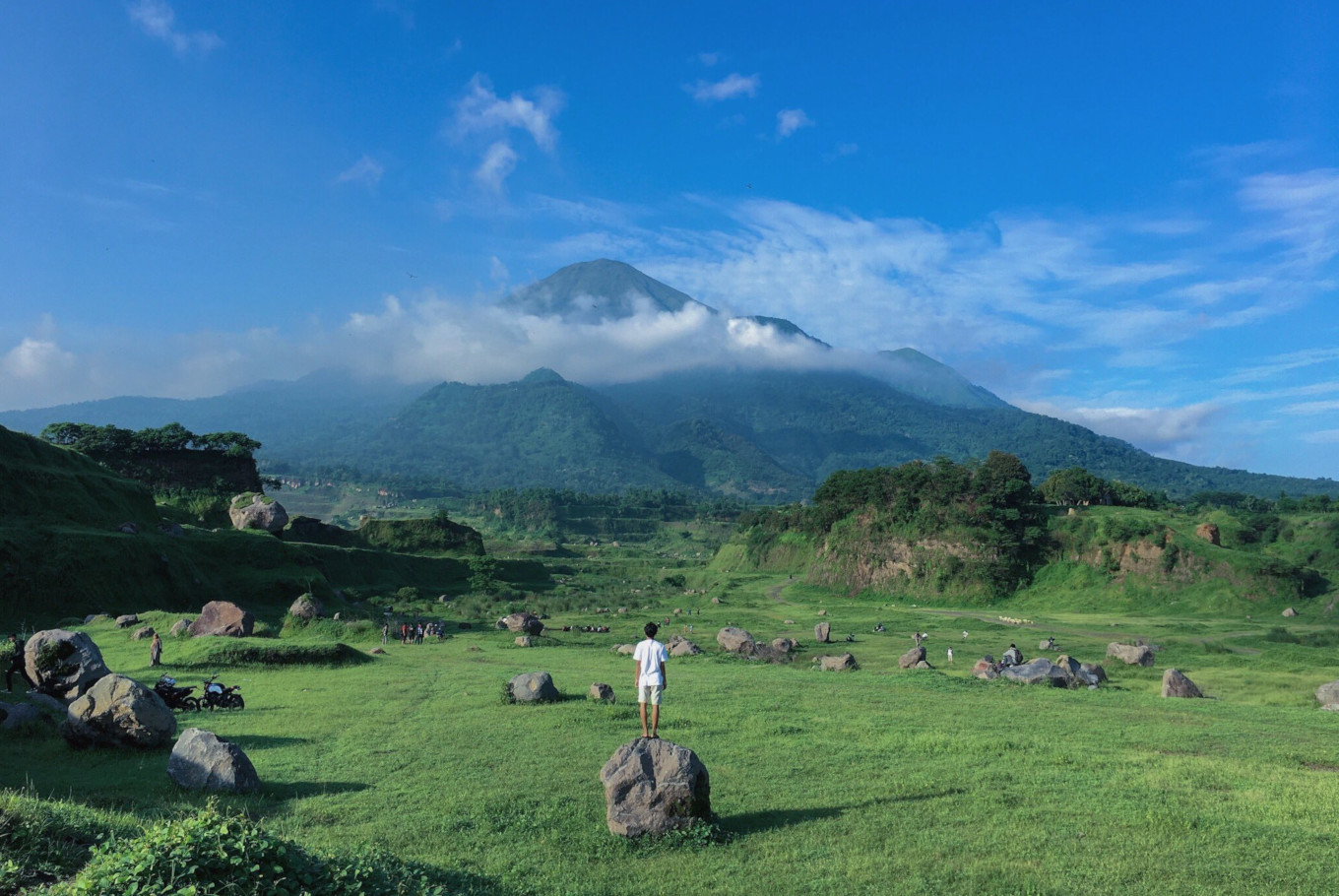Popular Reads
Top Results
Can't find what you're looking for?
View all search resultsPopular Reads
Top Results
Can't find what you're looking for?
View all search resultsBehind the internet sensations: Indonesia's tourist sites marred by fame
Tourist destinations in Indonesia often became overcrowded after becoming internet sensations.
Change text size
Gift Premium Articles
to Anyone
S
ocial media plays a big role in popularizing tourist destinations, especially in Indonesia. Travelers are often lured to come and capture their best shots that they then later upload on their multiple social media accounts.
However, sometimes fame comes at a price. Driven by the urge to post beautiful pictures and by a fear of missing out, some tourists tend to crowd the spots, abandoning etiquette and ending up ruining the natural beauty of the tourist spot they are in.
In some countries, over-tourism has become a prominent issue, with serious environmental impacts that force governments to put up restrictions or even close off-sites.
In Indonesia, these are some of the most recent tourist sites that have become internet sensations:
Ranu Manduro, East Java
Ranu Manduro in Mojokerto regency, East Java, might sound unfamiliar to travelers. That is until a video went viral in late February, displaying the area’s lush green landscapes with the scenery of Mount Penanggungan in the background.
The video also featured “Sunday Best” a popular song by American group Surfaces, and since then the area has been known as “Feeling Good” Ranu Manduro due to the lyrics of the song. After the video became a hit on Instagram and Twitter, people from different parts of the country flocked to the spot.
Mirip” #NewZealand ya ? #Mojokerto #ngoro #ranumanduro #ChineseNewYear #wonderfulindonesia #PesonaIndonesia pic.twitter.com/jDgNkzM8rn
— AdoeL Sohib (@Adoel_Sohib) February 25, 2020
Kompas.com (reported that heavy traffic congestion occurred at Ranu Manduro as too many people attempted to enter the area. Netizens also shared videos about plastic waste left by visitors.
Sekarang sudah Jadi FEELING BAD #Mojokerto #RanuManduro pic.twitter.com/uGNptlBNzE
— Wereng Alas (@WachidYuliantoA) March 1, 2020
Previously, Ranu Manduro served as a location for sand and rock mining. It was not meant to be a tourism hotspot, though the rainy season apparently created a lush, green landscape.
On Sunday, the spot was reportedly closed to travelers. Eka Dwi Fimansyah, head of Manduro Manggung Gajah village, said the closure was carried out by PT Wira Bumi, the owner of the area.
Eka expressed his hope that the area would be open for the public as it has brought benefits to local residents. Currently, he is still in discussion about the matter with the company. “I’m still assisting the residents to ask for the company’s permit in Surabaya,” Eka told Tribunnews.com.
Negeri di Atas Awan, Banten
Negeri di Atas Awan Gunung Luhur (Mount Luhur Land above the Clouds) is known as the place to go when you want to witness a sea of clouds in close proximity. From 5:30 a.m. to 8 a.m. at 901 meters above the sea, clouds would envelop the spot, creating images perfect for social media.
Located in Lebak regency, Banten, the spot was wildly popular last year. At one point, tens of thousands of travelers visited Lebak and caused a 7-kilometer traffic jam. Some failed to reach the peak and had to turn back home.
Anticipating the tourist boost, the local administration has prepared several facilities, including public toilets and a track for visitors who use private vehicles, as reported by kompas.com.
Amaryllis garden, Yogyakarta
In 2015, an amaryllis garden owned by Sukadi in Gunungkidul regency, Yogyakarta, was in full bloom and attracted visitors.
However, many of the tourists trampled on the flowers and picked them while attempting to take selfies, generating criticism and complaints on social media.
The flowers, locally known as puspa Patuk (the flower of Patuk), usually bloom from late November to mid-December and they can be sensitive to rainfall. In 2019, for instance, the flowers did not bloom perfectly due to low rainfall intensity, according to Tribunnews.com.
Hasil nya seperti ini,, hanya demi foto selfi.#SaveAmaryllis@infobencana pic.twitter.com/dymlCJxq8H
— Kolonel Dhemit (@AryaRagiel) November 27, 2015
After the incident in 2015, Sukadi built photo spots and installed lines to separate the flowers from visitors. (wir/wng)







